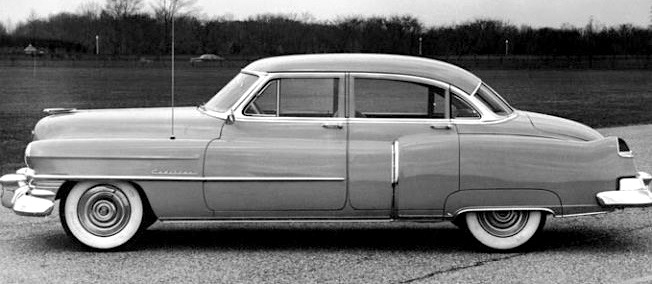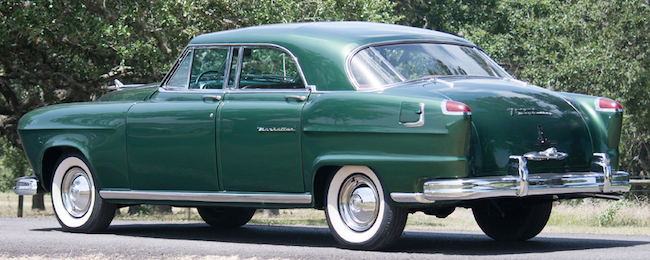Today's post deals with its set of models introduced shortly after the end of World War 2. All were mounted on a 115-inch (2921 mm) wheelbase, save a few later sedans.
Model names were assigned on the basis of body type. Drophead (convertible) coupes were called Hurricanes, named after the Hawker fighter. The fixed-top coupe was the Typhoon, named for a later World War 2 British fighter-bomber. Saloons (sedans) were named after bombers. The first such was the Lancaster, and a few years later the Whitley was added to the lineup. All told, 10,528 such cars were made between 1945 and 1953.
I wrote about an ugly 1950s Armstrong Siddeley body style here.
1947 Armstrong Siddeley Hurricane - car-for-sale photo
Styling was essentially prewar.
1946 Armstrong Siddeley Typhoon - HandH Auctions photo
The fixed-head coupe passenger greenhouse features a fairly flat roof and large windows, giving it an airy appearance.
1949 Armstrong Siddeley Lancaster - car-for-sale photo
Aside from the top of the A-pillar and roof, the saloon version is the same as the coupe forward of the B-pillar. For example, the front door forward cutlines are the same, though the saloon's door is more narrow.
1951 Armstrong Siddeley Whitley - car-for-sale photo
Whitleys were added for 1949. They were what the British call four-light (four-window) saloons. The main difference from the Lancaster is the shape of the top in the C-pillar area and the forward area of the trunk profile. B-pillars are thinner too.
1947 Armstrong Siddeley Hurricane - car-for-sale photo
In a gesture to late prewar styling trends, grille bars are horizontal.
1946 Armstrong Siddeley Typhoon - HandH Auctions photo
I suppose the idea was to yield a more "streamlined" look.
1947 Armstrong Siddeley Lancaster - car-for-sale photo
But the result was too ponderous. Vertical bars or thinner horizontal ones might have been improvements.
1951 Armstrong Siddeley Whitley - car-for-sale photo
Note the front fender sculpting. I'll say more about that farther down.
1947 Armstrong Siddeley Hurricane - car-for-sale photo
The rectangular panel below the trunk lid might be for spare tire access.
1946 Armstrong Siddeley Typhoon - HandH Auctions photo
Same rear as on the Hurricane.
1949 Armstrong Siddeley Lancaster - car-for-sale photo
The trunk area is superficially similar to that of the coupes. But the lid hinges are at the bottom and concealed, the handle is above, rather than below. Fuel filler caps are in the same place, however.
1952 Armstrong Siddeley Whitley - South Western Vehicle Auctions photo
This seems to be the 122-inch (3100 mm) Whitley, having six windows. The trunk lid is similar to that found on coupes, but extends farther down. The fuel filler cap is relocated to the fender. Note the dent on the front fender.
1949 Armstrong Siddeley Lancaster - car-for-sale photo
Now for the unusual front fender sculpting. As you can see, fender sides are dished in to form catwalks.
1947 Armstrong Siddeley Lancaster - car-for-sale photo
Seen from a more normal viewing perspective.
1951 Armstrong Siddeley Whitley - car-for-sale photo
The sculpting as seen from the rear.
1946 Armstrong Siddeley Typhoon - HandH Auctions photo
More decorative than functional, I rate the sculpting as interesting and distinctive, yet not attractive.



















































